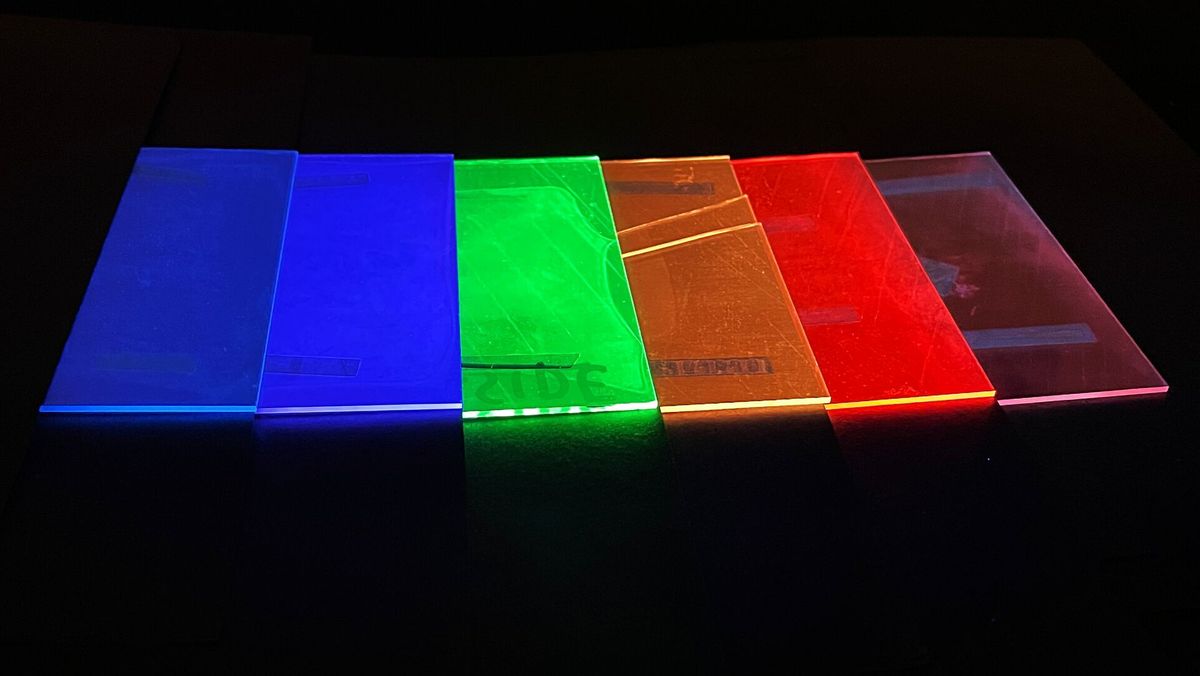Solar cells absorb energy in sunlight, but are not able to absorb it completely. Per-Anders Stensby Hansen wanted to do something about it. He began experimenting with transmutation of light. Solar cells mostly absorb visible light. By converting ultraviolet radiation and heat radiation into visible light, it will be possible to absorb more solar energy.
– There are elements on the periodic table that are excellent at exactly this, but very bad at absorbing light, according to Hansen.
Other materials can be very good at catching light, but not very suitable for transforming it. The problem is that these materials will not work together on their own.
We need diversity and collaboration to create the materials of the future
“We need a variety of materials, and get them to work together, if we want to succeed in making the materials we need,” Hansen explains.
He says the substances on the periodic table that are really good at emitting light in different colors are the lanthanoids. There are a number of elements located at the bottom, often in a separate block, of the periodic table. There are a total of 14 lanthanoids.
In order for him to be able to create materials that could convert light into the exact wavelength he wanted, he needed a material that could absorb the energy in sunlight.
There are organic molecules that are good at absorbing light from the sun, he explains, but are very bad at doing the advanced conversion we need.
By building up the lanthanides and various aromatic compounds layer upon layer, he was able to tune the process.
“We can see it as a living construct of chemicals that work well with each other,” says Hansen.
It is believed that it is possible to obtain the material to convert ultraviolet light into all colors in the visible spectrum.
“We’ve found organic compounds that can absorb UV rays and convert them into blue and purple light on their own,” he explains. To get red and green light, we also need the elements Europium and Terbium.
Orange was the biggest challenge
The biggest challenge was making something that would emit orange light. This is because they had to use a Samarium item.
Samarium cannot cooperate directly with organic compounds, says Hansen. We should have had a “diplomat” between them. The material that has proven to have the necessary diplomatic properties, Hansen says, is terbium.
It’s possible to adjust the color they get, Hansen says, by choosing different elements and creating different crystal structures.
About the project
The SUN-UP project will start in the fall of 2023. The goal is to make more use of sunlight by converting visible light into ultraviolet light.
The project is a collaboration between the Department of Chemistry at the University of Oslo and the Department of Energy Engineering (IFE), as well as partners in France, Poland and the Netherlands.
Transformation has many uses
Upward conversion of light, that is, the conversion of infrared light into visible light, Hansen says, has many applications. Mention biomarkers and different types of laser technology. Inactivated conversion converts ultraviolet light into visible light. Both can convert lasers and LED light into other colors, but neither can convert sunlight today because it is more difficult. However, the Hansen Project shows that it is possible.
– The fact that we’re able to emit orange light indicates that the principle works, he explains. We make materials work together at the nano and sub-nano level.
During the fall of 2023, work will begin to make this work a success in other contexts.
– When we talk about future energy solutions, we should take advantage of all possibilities, not put all our eggs in one basket, says Hansen.
The conversion solution he will be working on might be suitable for using sunlight to make green hydrogen. Anyway, there is one possibility that Hansen outlined.
– We’re going to convert visible light into ultraviolet light. In this way, light becomes more accessible to different energy concepts.

“Web specialist. Lifelong zombie maven. Coffee ninja. Hipster-friendly analyst.”




